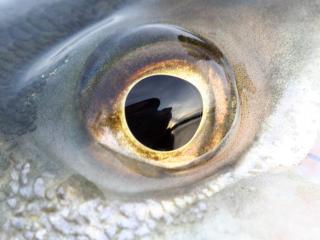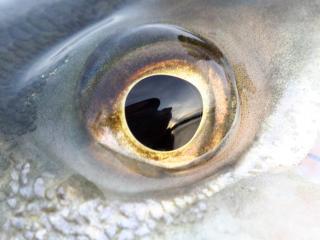 The variety of fishing lures available on the market today is seemingly boundless, and can often times leave an angler scratching his head in the fishing aisle of their local retailer. As a former sales associate at an outdoors retailer, I've had many customers ask me the same question: since it's underwater, do fish even notice or care about the differences in these lures? How do fish even perceive the many colors, the orchestra of available sounds, and several patented scents available to consumers? If you're one such curious angler, who has long wondered just how the different characteristics of fishing lures impact fish, keep reading. In this article, I will explain to you, just as I explained to my customers, how fish use their highly sensitive senses to hunt, evade predators, and survive in a demanding, ever-changing underwater environment.
The variety of fishing lures available on the market today is seemingly boundless, and can often times leave an angler scratching his head in the fishing aisle of their local retailer. As a former sales associate at an outdoors retailer, I've had many customers ask me the same question: since it's underwater, do fish even notice or care about the differences in these lures? How do fish even perceive the many colors, the orchestra of available sounds, and several patented scents available to consumers? If you're one such curious angler, who has long wondered just how the different characteristics of fishing lures impact fish, keep reading. In this article, I will explain to you, just as I explained to my customers, how fish use their highly sensitive senses to hunt, evade predators, and survive in a demanding, ever-changing underwater environment.
The four general senses that fish utilize, in order of proximity from closest to broadest, are as follows: eyesight, vibration impulses, smell, and hearing. A fish's eyes are quite different from those of a land animal, in that the lens is almost a perfect sphere, as a opposed to somewhat flattened. This spherical lens shape causes most fish to be very near-sighted, which is why anglers need to be so accurate when casting a lure. Predatory fish like bass and pike have eyes located near the front of their heads, which increases their depth perception and makes them very effective hunters. Minnows and bluegill, however, have eyes on the sides of their heads, which increases their total field of vision and allows them to have a constant awareness of their surroundings. This subtle variation in eye position between predator and prey species makes a world of difference in the behavior and habits of the fish, and is a great example of how such a seemingly small difference can have a large impact.
While fish have been proven to recognize and relate to certain colors, the rules of science still apply; as water loses its clarity due to failing light and depth, the distinctions in color will diminish and nearly everything a fish sees as the water gets deeper will appear black. However, as light and clarity decrease at greater depths, fish will instinctively relate to shapes they're used to seeing in their environment, such as prey items or other fish.
A fish's hearing is not only a very integral part of its survival, but the actual physical make-up of a fish's ear contributes to the function of the organ as well. Fish don't have ears with outside openings, like humans or dogs, but rather have an inner ear, located around the same spot as a human's, that is not even connected to an ear drum. As sounds are transmitted through the water, they reverberate through the bones of a fish's head directly to the ear. The ears of a fish are extremely sensitive and can pick up sounds and vibrations at very long ranges, even from thousands of yards away. This is why lures that cause vibration or have inner rattle chambers are so very effective, especially when the water is stained or cloud cover is heavy.
Eyesight and hearing are only two senses that are heavily relied upon by fish, however, but to learn more about the other senses fish use, read part two of this article. There, I break down how fish utilize their sense of smell, as well as their sensitivity to vibrations, in order to provide readers a better understanding of just how fish perceive and react to changes in their environment. Hopefully, after reading this series on how fish use their senses, you'll know more about why there are so many different lures that do different things in the water. Who knows? It could mean the difference between getting skunked or pulling in a limit on your next trip out!








